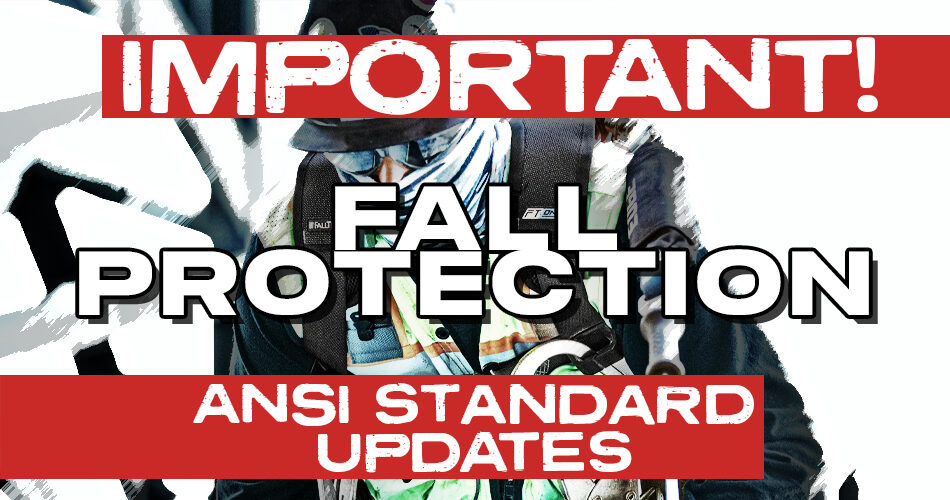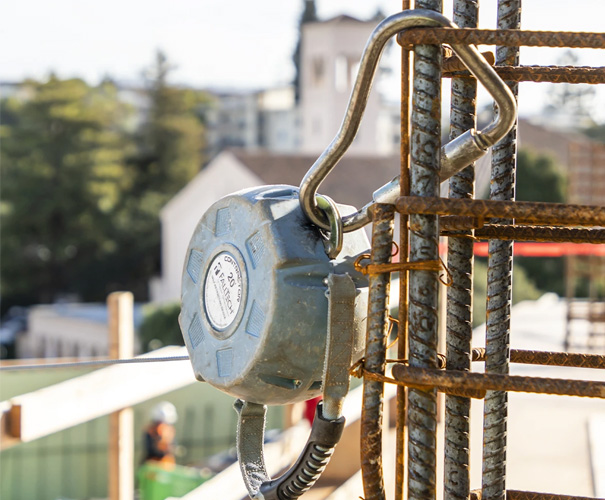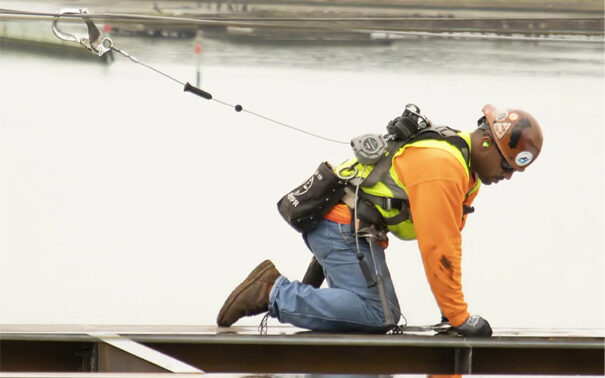The ANSI/ASSP Z359.14-2021 standard has been recently updated to meet the more demanding requirements for Self-Retracting Lifeline (SRL) usage. As SRLs are gaining popularity for different applications across industries, the categorization and testing requirements needed to be updated to accommodate for new and improved models of SRLs. Some brands, like Werner, have now begun manufacturing SRLs with the new classification system in place, so it’s important to understand the new labeling to ensure that you know what type of SRL is now right for you, and that you’re not purchasing SRLs with standards that will soon expire.
Why Did the Standards Change?
The new regulations were created to accommodate for the growing market of Self-Retracting Lifelines. The updates are essentially to make the capabilities of each type of SRL more transparent, to ensure that each is being used correctly in different applications. As newer models are being released and more industries are relying on these tools to complete their daily tasks, we need to ensure that each one is held up to the highest level of safety standards for what they are being used for.
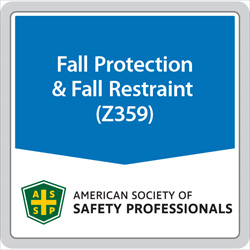
“The main purpose of the Z359.14 Standard is to ensure that qualified products have been subjected to exacting standards of design and performance to ensure that these products have the highest possible factors of safety based on known hazards and end-user behaviors. Secondarily, it was important to ensure that the standard included a vehicle to disseminate actionable information to the end-user community”.
Z359.14 subcommittee chair Dan Henn
A few new types of SRLs have been released since the current ANSI Z359.14 standards were created, most notably SRL-P lifelines. These are personal SRLs that are compact enough to attach to a full body harness as a fall arrest protector or mounted on an anchorage. SRL-Ps are also common alternatives to energy-absorbing lanyards. The new ANSI Z359.14-2021 standards include regulations for these products and simplify how SRDs are described and classified to help you gain a better understanding of their capabilities and limitations.
Classification Changes
SRLs will now be classified by two new class ranges: Class 1 and Class 2. The new classifications have much more strict regulations than the previous Class A and B ratings, as you can see broken out in the table below. Class 1 identifies SRLs that are used only on overhead anchorages and are subjected to a max free fall of 2 feet or less. Class 2 SRLs can be used in applications where overhead anchorages may not be accessible and a structural edge is used instead; these can withstand a free fall of no more than 6 feet over an edge.
| ANSI Z359.14-2014 (Old) | ANSI Z359.14-2021 (New) |
|---|---|
| Class A -Tested overhead with 282 lb. weight -Must arrest fall within 24″ -Average force less than 1,350 lbs. | Class 1 -Tested overhead with 310 lb. weight -Must arrest fall within 42″ -Average force less than 1,350 lbs. |
| Class B -Tested overhead with 282 lb. weight -Must arrest fall within 54″ -Average force less than 900 lbs. | Class 2 -Meets Class 1 standards -Tested at foot level with 310 lb. weight -Arrest distance printed on label and instructions |
It is also now required that each SRL has their class clearly labeled on the product. This is to ensure that users have a better understanding of arrest distances and clearance requirements for each product, as well as warnings associated with foot-level tie-off when used on structural edges vs. overhead anchoring.
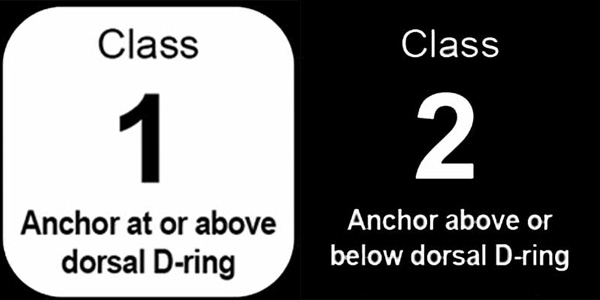
Updated Static and Dynamic Strength Testing
A primary driver for the updated standards is the growing popularity of SRL-P devices. The previous ANSI Z359.14-2014 regulations did not outline any specific standards for these because they were not commonly used. SRL-Ps have evolved significantly since then, so ANSI Z359.14-2021 now includes tests specifically for SRL-Ps to clearly define their capabilities and create more transparency for users. The testing and strength regulations for all SRLs were also updated significantly to more rigorous requirements. Each static strength requirement received a 20% increase to accommodate for more advanced applications. More rigorous energy management standards have been set as well for all models to hold more weight and have a greater fall arrest distance.
| ANSI Z359.14-2014 (Old) | ANSI Z359.14-2021 (New) |
|---|---|
| Hold 3,000 lbs. for 1 minute | Hold 3,600 lbs. for 1 minute |
| Drop Tests with a 282 lb. weight | Drop Tests with a 310 lb. weight |
| Specific Tests for SRL-P did not exist | Specific Tests for SRL-P: -Dual Static to 3,600 lbs. -Dual Connection <1,800 lbs. force -Abrasion test to 3,600 lbs. after abrasion for tie-back models -Fall Factor 2 test |
If you use Self-Retracting Devices at all in the workplace, make sure that they meet the new, updated ANSI Z359.14-2021 standards to keep yourself safe and up-to-code. Ohio Power Tool has a great selection of SRLs from brands like Werner and FallTech. If you need help picking out the perfect fall protection device for you, give us a call at 800-242-4424, email us at sales@ohiopowertool.com, or leave a comment below for assistance. We’re always happy to help! To be the first to know about new products and deals, subscribe to our e-newsletter and follow us on social media!


